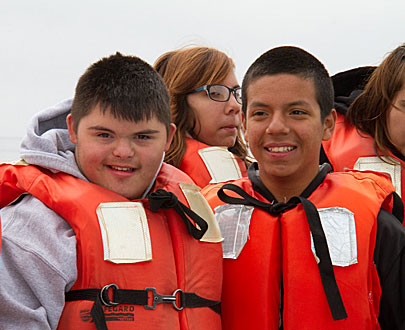Students of All Income Levels Retain Lessons on Ocean Science and Stewardship

OSO engages 4th — 6th grade youth with a hands-on science education field trip on a 65-foot catamaran on Monterey Bay and in a shore-side education center, in addition to ocean science curriculum provided for use in the classroom. It is free, and each class completes a community service project. OSO also funds bus transportation to and from our site for lower income schools.
“We are pleased that the ASR analysis indicates that our instructors continue to be effective at teaching ocean concepts across several subjects including math and science while inspiring environmental stewardship and advocacy,” said OSO Executive Director Dan Haifley.
Before participating, an average of 73% of students agreed with the survey questions overall. After attending, this percentage increased to 95%. When student surveys were divided by income level, results showed that all groups of students increased their environmental knowledge after attending the program.
The students from lower and middle-income groups generally had lower overall levels of agreement (73% and 71%, respectively) before the program started than the higher income groups (80%). All groups were at 95% after the program. When teachers and group leaders were asked, 100% said that their students “learned a lot” from the program.
Seven percent had attended the program previously. Based on population estimates, 64% of the students were Hispanic or Latino, 19% were White, 9% were Asian, Filipino, or Pacific Islander, 1% were African American, less than 1% were American Indian or Alaska Native, and 7% were of another race or ethnicity. 46% of the students attending the OSO program did not have English as their primary language, a slight increase since 2010-11.
More than half (66%) of students were receiving free or reduced price meals. 55% of participating groups were lower income groups, 29% were middle income groups, and 15% were higher income groups.
In 2014-2015, OSO developed a “virtual program” now available online fort students who physically cannot get to OSO’s facility, and also developed a new app that allows oceanographic data from the boat to be entered by students directly onto OSO’s website for their use in their own classrooms.
O’Neill Sea Odyssey, working with the Pepper College Readiness Network, this month launch its classroom, ocean-based curriculum on Pepper’s national web-based platform. O’Neill Sea Odyssey continues to raise funds for bus transportation, having provided bus scholarships for 78 classes in 2015-16.